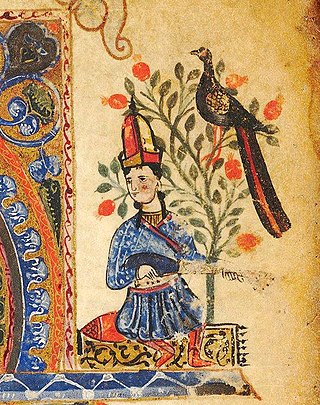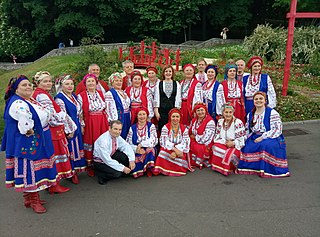
Renaissance music is traditionally understood to cover European music of the 15th and 16th centuries, later than the Renaissance era as it is understood in other disciplines. Rather than starting from the early 14th-century ars nova, the Trecento music was treated by musicology as a coda to Medieval music and the new era dated from the rise of triadic harmony and the spread of the contenance angloise style from Britain to the Burgundian School. A convenient watershed for its end is the adoption of basso continuo at the beginning of the Baroque period.

In Spain, music has a long history. It has played an important role in the development of Western music, and has greatly influenced Latin American music. Spanish music is often associated with traditional styles such as flamenco and classical guitar. While these forms of music are common, there are many different traditional musical and dance styles across the regions. For example, music from the north-west regions is heavily reliant on bagpipes, the jota is widespread in the centre and north of the country, and flamenco originated in the south. Spanish music played a notable part in the early developments of western classical music, from the 15th through the early 17th century. The breadth of musical innovation can be seen in composers like Tomás Luis de Victoria, styles like the zarzuela of Spanish opera, the ballet of Manuel de Falla, and the classical guitar music of Francisco Tárrega. Nowadays commercial pop music dominates.
The music of Croatia, like the divisions of the country itself, has two major influences: Central European, present in central and northern parts of the country including Slavonia, and Mediterranean, present in coastal regions of Dalmatia and Istria.

Music has been an integral part of Egyptian culture since antiquity in Egypt. Egyptian music had a significant impact on the development of ancient Greek music, and via the Greeks it was important to early European music well into the Middle Ages. Due to the thousands of years long dominance of Egypt over its neighbors, Egyptian culture, including music and musical instruments, was very influential in the surrounding regions; for instance, the instruments claimed in the Bible to have been played by the ancient Hebrews are all Egyptian instruments as established by Egyptian archaeology. Egyptian modern music is considered as a main core of Middle Eastern and Oriental music as it has a huge influence on the region due to the popularity and huge influence of Egyptian cinema and music industries, owing to the political influence Egypt has on its neighboring countries, as well as Egypt producing the most accomplished musicians and composers in the region, specially in the 20th century, a lot of them are of international stature. The tonal structure music in the East is defined by the maqamat, loosely similar to the Western modes, while the rhythm in the East is governed by the iqa'at, standard rhythmic modes formed by combinations of accented and unaccented beats and rests.
Ukrainian music covers diverse and multiple component elements of the music that is found in the Western and Eastern musical civilization. It also has a very strong indigenous Slavic and Christian uniqueness whose elements were used among the areas that surround modern Ukraine.

The music of Bulgaria refers to all forms of music associated with the country of Bulgaria, including classical, folk, popular music, and other forms.
Music of Serbia represents the musical heritage of Serbia, both historical and modern. It has a variety of traditional music styles, which are part of the wider Balkan musical tradition, with its own distinctive sound and characteristics.

The music of Armenia has its origins in the Armenian highlands, dating back to the 3rd millennium BCE, and is a long-standing musical tradition that encompasses diverse secular and religious, or sacred, music. Folk music was notably collected and transcribed by Komitas Vardapet, a prominent composer and musicologist, in the late nineteenth and early twentieth centuries, who is also considered the founder of the modern Armenian national school of music. Armenian music has been presented internationally by numerous artists, such as composers Aram Khachaturian, Alexander Arutiunian, Arno Babajanian, Haig Gudenian, and Karen Kavaleryan as well as by traditional performers such as duduk player Djivan Gasparyan.
Georgia has rich and still vibrant traditional music, which is primarily known as arguably the earliest polyphonic tradition of the Christian world. Situated on the border of Europe and Asia, Georgia is also the home of a variety of urban singing styles with a mixture of native polyphony, Middle Eastern monophony and late European harmonic languages. Georgian performers are well represented in the world's leading opera troupes and concert stages.
Since the early 1970s, Brittany has experienced a tremendous revival of its folk music. Along with flourishing traditional forms such as the bombard-biniou pair and fest-noz ensembles incorporating other additional instruments, it has also branched out into numerous subgenres.
Northwest Iberian folk music is a traditional highly distinctive folk style, located along Spain's north-west Atlantic coast, mostly Galicia and Asturias, that has some similarities with the neighbouring area of Cantabria. The music is characterized by the use of bagpipes.
Balkan music is a type of music found in the Balkan region of southeastern Europe. The music is characterised by complex rhythm. Famous bands in Balkan music include Taraf de Haïdouks, Fanfare Ciocărlia, and No Smoking Orchestra.
The culture of Montenegro is as pluralistic and diverse as its history and geographical position would suggest. Montenegro's culture has been influenced by the Serbian Empire, the Byzantine Empire, Ancient Greece, Ancient Rome, Christianity, the Ottoman Empire, the Republic of Venice, Austria-Hungary, and Yugoslavia.

Classical music generally refers to the art music of the Western world, considered to be distinct from Western folk music or popular music traditions. It is sometimes distinguished as Western classical music, as the term "classical music" also applies to non-Western art music. Classical music is often characterized by formality and complexity in its musical form and harmonic organization, particularly with the use of polyphony. Since at least the ninth century it has been primarily a written tradition, spawning a sophisticated notational system, as well as accompanying literature in analytical, critical, historiographical, musicological and philosophical practices. A foundational component of Western culture, classical music is frequently seen from the perspective of individual or groups of composers, whose compositions, personalities and beliefs have fundamentally shaped its history.

Ukrainian folk music includes a number of varieties of traditional, folkloric, folk-inspired popular music, and folk-inspired European classical music traditions.
Renaissance Ensemble Serbia is the first early music ensemble in Serbia and the second in south-eastern Europe, having been founded in 1968. Ensemble Renaissance usually focuses on the music of the Middle ages, Renaissance and Baroque. Occasionally, however, Ensemble performs modern music on ancient instruments.
Journey Through Dalmatia is album by Ensemble Renaissance, released on 14 March 1999 on the Al Segno label. It is their 14th album overall, dealing with early music of Dalmatia and Adriatic, from the earliest medieval manuscripts with Beneventan chant and church music, to the first authentic Dalmatian Renaissance composers, such as Petar Hektorović, who wrote down two songs, one bugarštica Kada mi se Radosave vojevoda and one song I kliče devojka, both of which were printed in Venice; also are included the first composers active in Republic of Ragusa, like Vincenzo Comnen, the renaissance printers like Andrea Antico, Julije Skjavetić, Marcantonio Romano, renaissance dances, music of nobility, up to the early baroque and late baroque sonatas and motets by Tomaso Cecchini, Ivan Lukačić, Vinko Jelić. The tracks included on the album are also first renaissance dances. One of the members of the Ensemble, Dragan Mlađenović, cites the album as their greatest success. The Journey through Dalmatia was their second album dealing with early music of Dalmatia and Adriatic, the first being Music of the Old Adriatic from the 1983.

Roots of the Balkan is the 15th album by Ensemble Renaissance, released in 2002 on the Classic Produktion Osnabrück label in Germany and Serbia. It is Ensemble's fifth album with early music of Serbia. It is also their most complete and mature work on the theme of early Serbian ethnomusicology. Presented on this album are secular and ritual dances, songs and melodies from the entire territory of Serbia, the oldest being from the time of Nemanjić dynasty, Ottoman period, up to the 19th century. Just like Renaissance's previous works from the same field, most of the material was taken from the books by famous Serbian ethnomusicologists Dimitrije Stefanović, Živojin Stanković, Kosta Manojlović, Stevan Stojanović Mokranjac, Đorđe Karaklajić (unpublished), and others.

Music of Old Serbia is an album by soloist Dragoslav Pavle Aksentijević with Ensemble Renaissance, released in 1987 on the PGP RTs label. Most of the material from this album is a remaster from Music of the Old Serbia, only this edition is dedicated exclusively to the Medieval Serbian chant and important members of the Serbo-Byzantine school.

Music in Medieval England, from the end of Roman rule in the fifth century until the Reformation in the sixteenth century, was a diverse and rich culture, including sacred and secular music and ranging from the popular to the elite.










